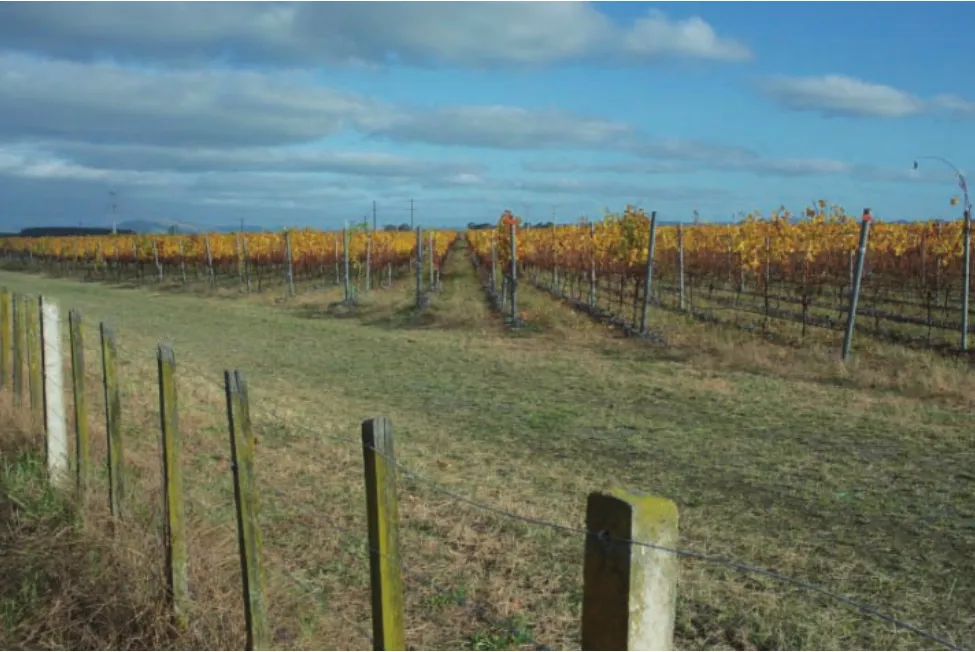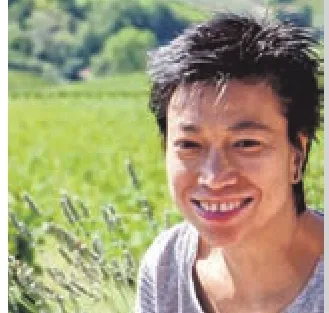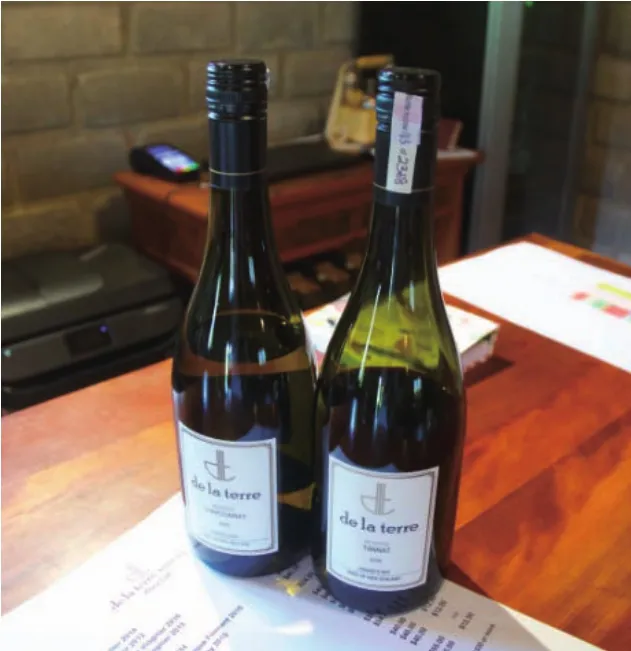重游霍克斯湾
文|Tersina Shieh 编、译|张恬熙
霍克斯湾就像一颗沧海遗珠,下一次当你拜访新西兰时,在这里停留几天吧,相信我,你一定不会失望的。
上一次到访吉布利特砾石区是3年前的2015年,我在和谐酒庄进行采收工作,但由于只有3周时间,所以在葡萄全部采摘完毕后,我就离开了。今年酿酒之旅的时间有所延长,此时重游和谐酒庄再合适不过,这次我主要负责采收后的工作。采摘完最后一批赤霞珠后的两天,我就到了酒庄。
葡萄采摘后仍有大量的工作需要完成,尤其是红葡萄品种。我的工作包括压酒帽、压榨葡萄、大量的换桶、橡木桶工作以及混酿测试。这些工作并不忙碌但是需要大量的学习—发酵后的浸渍时间应该持续多久,什么时候进行压榨,混酿时希望获得什么,如何有效地搅桶……一切工作都在尊敬的酿酒师顾问珍妮·多布森和庄主菲利普·霍恩的指导下进行。
和谐酒庄是一家精品酒庄,今年酿酒葡萄只有40多吨。在小酒庄工作与在大酒庄完全不同。前者会更加轻松,因为一切的规模都小得多,但这也意味着没有人可以偷懒。更重要的是,我们必须格外留神,不能犯下任何错误,以免导致不必要的浪费或者是更糟的情况:损失一批葡萄酒。毕竟一升葡萄酒的损失对于小酒庄来说远远大于大酒庄。我们甚至会把样本余液放回罐/桶中,而不是把它们倒入排水沟里。我学会了更珍惜每一滴葡萄酒。


谢德兰
酿酒师,有在英国、葡萄牙、南非等地的酿酒经验,独立酒评人。
吉布利特砾石区是霍克斯湾的子产区,位于新西兰北岛的东海岸。顾名思义,土壤是由石头、砾石和沙子混合而成。不像大多数的藤蔓植物种植区,吉布利特砾石区基本上地势平坦,这种自由排水的砾石土壤使该地区能够生产世界级的葡萄酒。这里种植着约90%的红葡萄品种,梅洛占首位,其次是西拉、赤霞珠和其它他波尔多品种。梅洛主导的波尔多混酿是这一产区的“明珠”,但我认为该产区的西拉非常优雅,有凉爽气候带来的胡椒特征,夹杂着成熟的深色水果香气,也是一个明星品种。取决于生产商的选择,吉布利特砾石区西拉的风格既可以是芳香扑鼻且年轻时口感柔和,也可以是纯净优雅,令人愉悦并具有陈年潜力。
和谐酒庄西拉的风格属于后者。最近上市的是2013年份酒。菲利普组织了一场西拉葡萄酒的垂直品鉴,从2013年到刚装瓶的2016年都有,对我而言这真是太棒了!橡木桶使用情况每年都有些不同,但葡萄酒却反映了当年的气候条件。2014年和2016年气候温暖,两个年份的葡萄酒集中度都不错。由于2015年更为凉爽,所以葡萄酒更芳香,口感稍柔和一些。我喜欢2015年份的葡萄酒,或许是因为那年我参加了酿酒工作!
和谐酒庄还用外购的葡萄酿造一小部分白葡萄酒。今年有6桶霞多丽葡萄酒,还有一小罐灰皮诺,每隔一天我都要做搅桶工作。由于使用了不同的发酵技术,葡萄酒虽然完全不同,但是品质都一样优秀。我发现,和谐酒庄大部分的葡萄酒风格都比较内敛,这或许是因为珍妮在波尔多生活以及酿酒已经近20年了。
My four weeks in McLaren Vale not only allowed me to visit other wineries, but also to explore the region.
The last time I was in Gimblett Gravels was three years ago in 2015 when I did a harvest at Unison Vineyard. I was only there for three weeks and left after all the grapes were picked. Therefore it was fitting that I went back to Unison during my extended winemaking journey but this time for post harvest work. I arrived two days after the last Cabernet Sauvignon was picked.
There is still plenty to do after grapes are picked, especially for red wine. My work included punching down, pressing, lots of racking,barrel work and blending trials. It was less frantic but still heaps to learn - how long should post fermentation maceration last and when to press; what to look for at blending, effective barrel stirring .... all under the guidance of highly-regarded consultant winemaker Jenny Dobson and owner Philip Horn.



Unison is a boutique winery with just over 40 tons of grapes processed this vintage. Working in a small cellar is totally different from working in a bigger one. It is more relaxed because everything is in a much smaller scale but it also means we have no one to pass the jobs to. More importantly, we need to be much more careful not to make any mistakes that may lead to unnecessary wastage or worst,ruin a batch of wine. After all, a litre of wine means a lot more to a small winery than a big one. We even put leftover samples back in tanks/barrels rather than chucking them down to the drain. I learnt to appreciate and save every single drop of wine.
Gimblett Gravels is a sub-region of Hawkes Bay that lies on the east coast of North Island of New Zealand. As the name implies, the soil is composed on a mixture of stones, gravels and sand. Unlike most vine-growing regions, Gimblett Gravels (and in fact most Hawkes Bay) is largely flat but this free-draining gravelly soil enables the region to produce world-class wine. About 90% of vines are red varieties with Merlot leading the pack, followed by Syrah, Cabernet Sauvignon and other Bordeaux varieties. Merlot dominated Bordeaux blend is the jewel of the region but I think their Syrah, with the elegant cool climate pepper character combined with ripe dark fruits aromas,is the star. Depending on producers, Gimblett Gravels Syrah can be fruit-forward and accessible when young or refined, savoury with ageing potential.
Unison’s Syrah is of the latter style. Its current release is 2013 vintage. Philip kindly organised a vertical tasting of his Syrah from 2013 to the just bottled 2016 for me and it was fascinating. The oak regime was slightly different in each year but the wine certainly reflected the climatic condition of the year. 2014 and 2016 were warmer and both wines have good concentration while 2015, being a cooler year, resulted in a more fragrant and slightly softer wine. I love the 2015 probably because I was there picking and processing the grapes!
Unison also makes a small amount of white wine from sourced grapes. This year there are six barrels of Chardonnay which I fervently stirred every other day, and a small tank of Pinot Gris. Because of different fermentation techniques, the wines have totally different but equally lovely texture. I found that Unison wine tends to be more restrained in general probably because Jenny has lived and made wine in Bordeaux for some 20 years.

